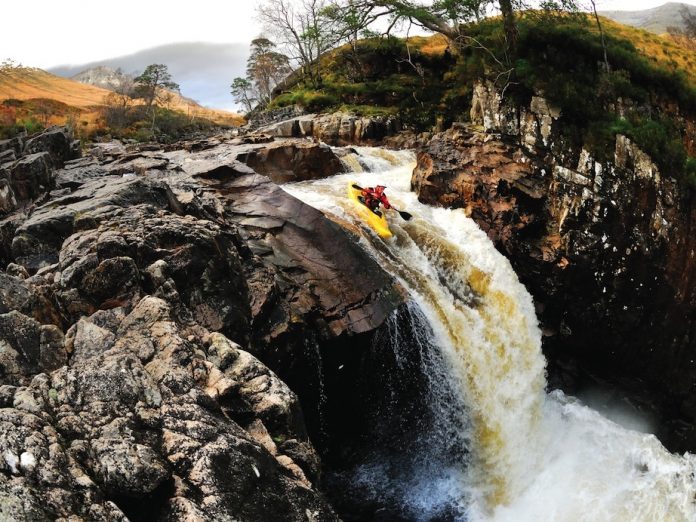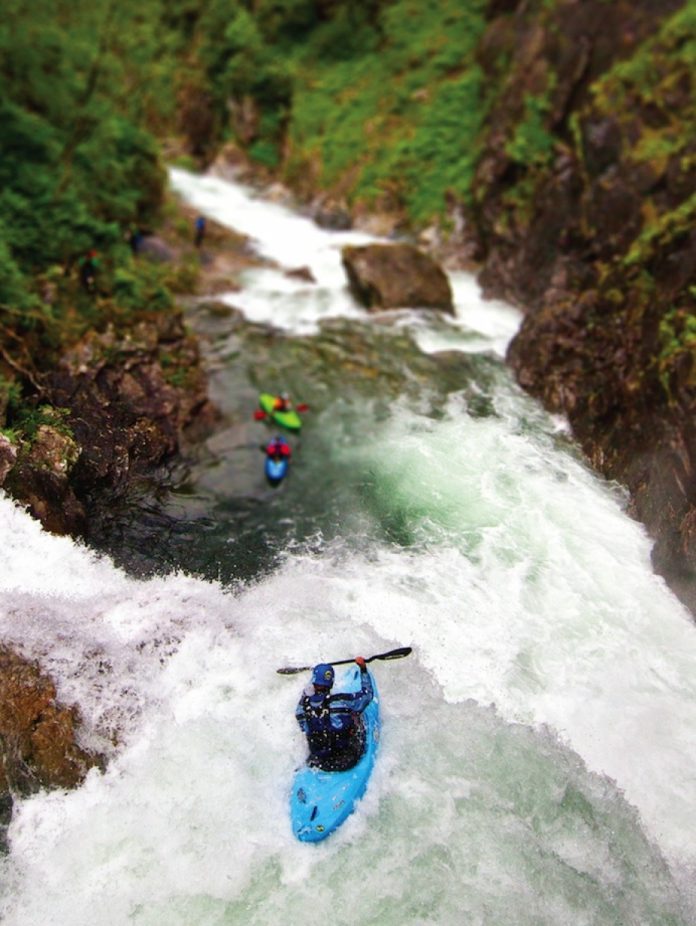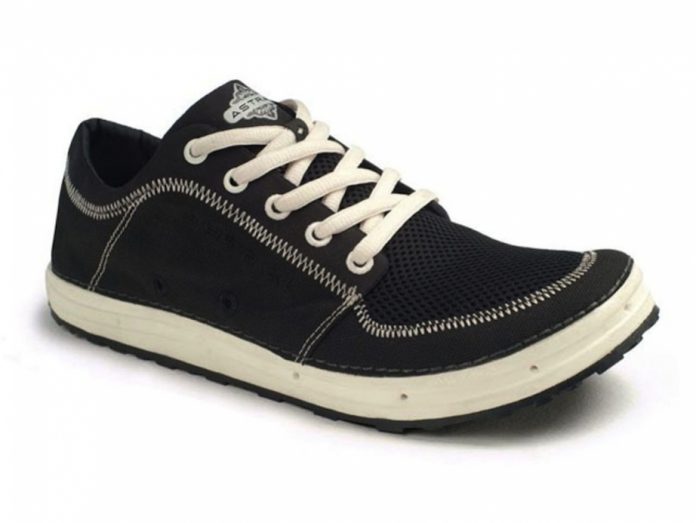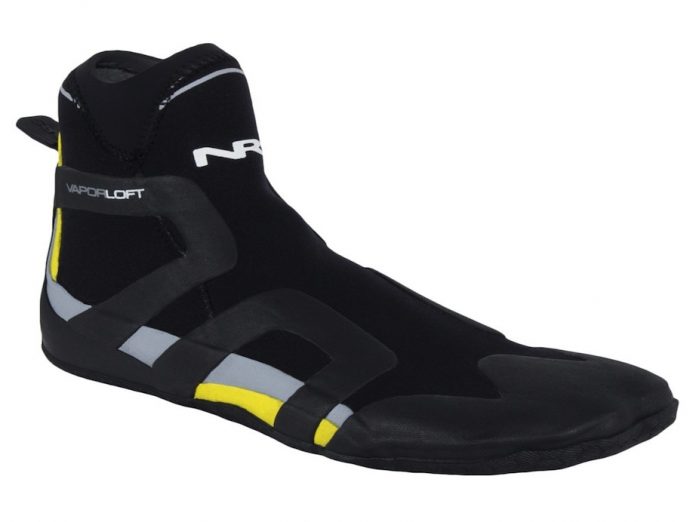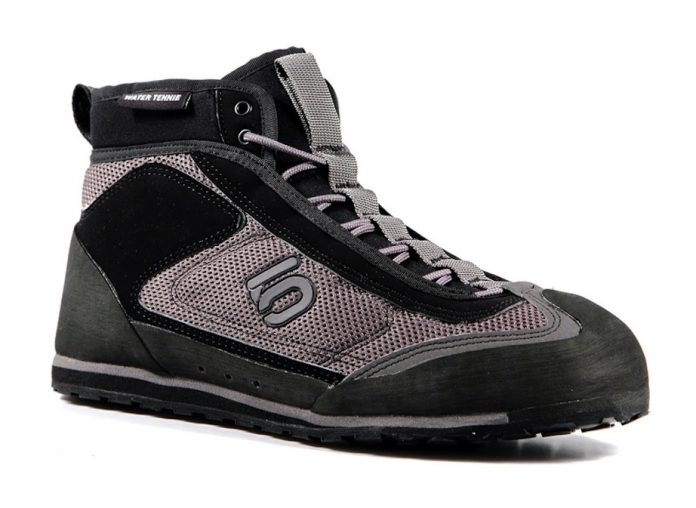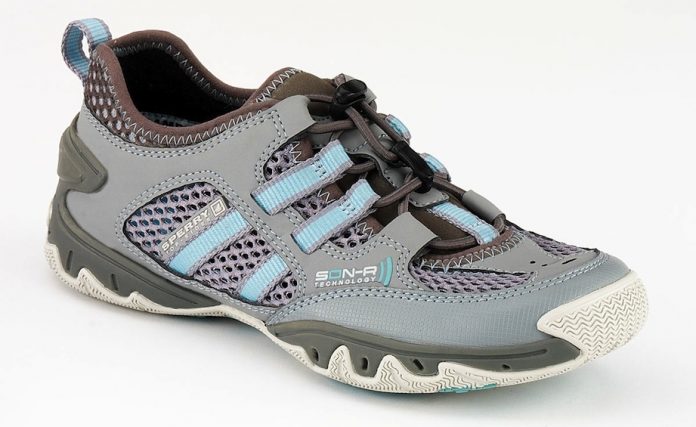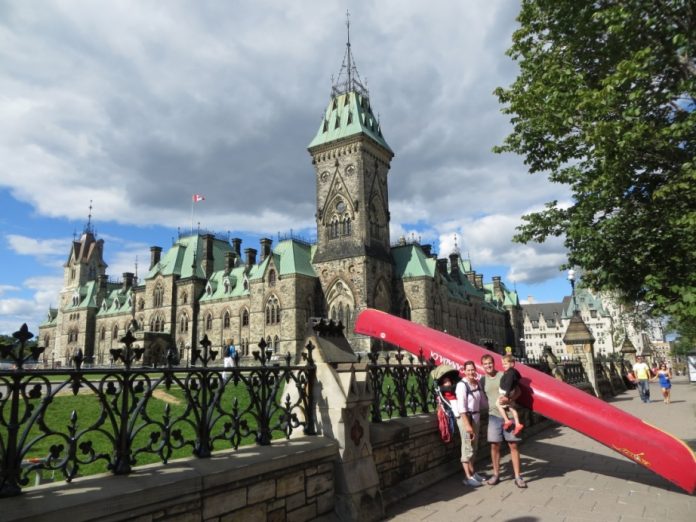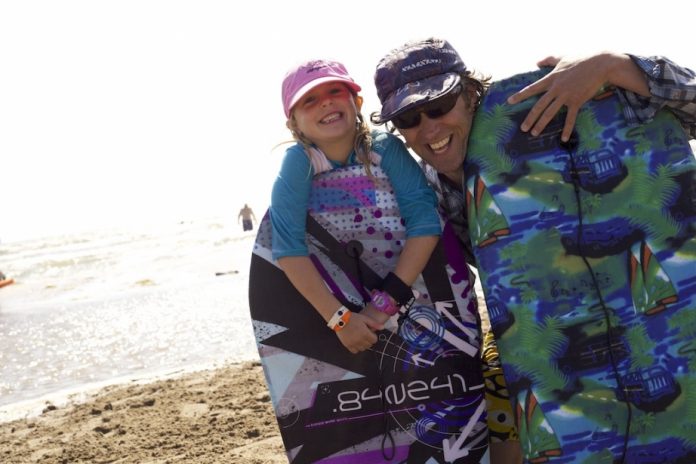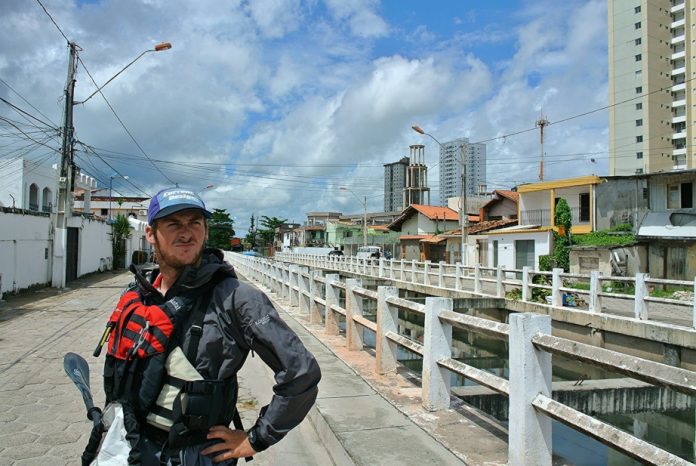Not much can rock the boat of experienced canoeists Pam and Geoff MacDonald—except maybe their two toddlers, Jude and Rane, who have joined their cross-Canada journey and turned a couple’s adventure into a family’s summer getaway.
“[Having kids with us] changes how we travel; I’m not going to say it’s super easy,” Geoff said. “But kids don’t necessarily hold you back.”
In 2007 and then childless couple set out from Victoria, BC expecting to make the coast of Newfoundland within two years. Seven years later, they finished their 10,000-kilometer journey in the tidewaters of the Atlantic, in the St. Lawrence Seaway near Quebec City on August 30.
Oldest son Jude was just nine months the first summer Geoff and Pam brought him canoeing. While they had to shorten their planned trip that year from eight months to three months long, and camp at night because Jude couldn’t handle night paddling, Geoff and Pam were still able to make progress on their goal.
“You have to have a lot of patience traveling with kids…and take into account the temperament of your children,” Pam said. Since Jude has always been entertained by what’s around him, Pam said that it’s been easy taking him canoeing because he likes mimicking birdcalls, making up stories and singing songs.
“Sometimes Jude misses his friends and we have to make sure we have cookies and toys so he doesn’t get bored…[but] he asks about canoeing all winter,” Pam said. “When we had a flash cold at the beginning of summer, Jude cried because he thought summer wasn’t going to get here and that he wouldn’t get to go canoeing.”
This is Jude’s fourth summer out in the canoe and the first for his seven-month-old brother Rane. While Pam and Geoff say it’s now hard to imagine doing this trip without their kids, a lot has changed since they first hoped to “canoe from the tides of the Pacific to the tides of the Atlantic.”
“When we started out, as just the two of us, we could push it a little harder, nothing really dictated what we could do,” Geoff said. “Pre-kids, we went over the continental divide and it was triumphant.” Passing the continental divide meant more than 100 kilometers of mountainous portages. “Since having kids, we’ve become much more cautious, but also found triumphant moments in the small things—like watching Jude mesmerized by a campfire.”
Geoff and Pam altered their original plans, acknowledging that there are things that they can’t do with kids on board, like canoeing off the coast of eastern province Newfoundland because of how stressful ocean paddling can be. The couple can also only cover about 25 kilometers per day, which is just half of what they were able to do when it was just the two of them.
Pam said she’d love to inspire more parents to get outside with their children and do trips like this, but only if the parents already enjoy canoeing and camping. She said that if you pressure parents into it and they don’t enjoy what they’re doing then the kids won’t either. And life on a canoe trip comes with the same challenges that parents experience at home.
“Sometimes you have bad days…[like] when they’re both crying at once,” Pam said. “That’s when I joke about wanting to hire a paddling nanny.”
To learn more about the MacDonald’s cross-Canada canoe trip visit www.canoeacrosscanada.ca
This article appeared in Paddling Magazine, August 2013.



